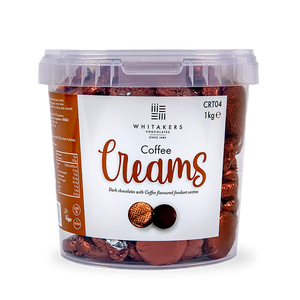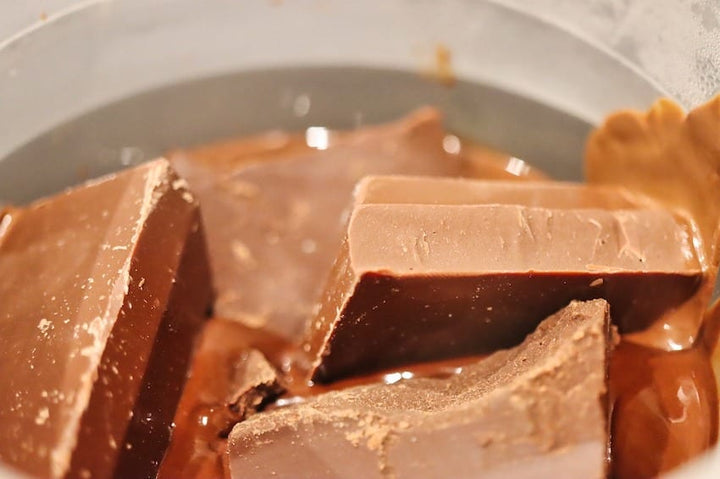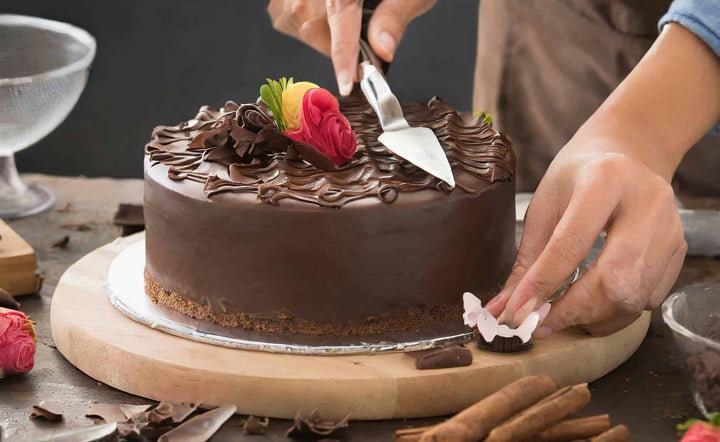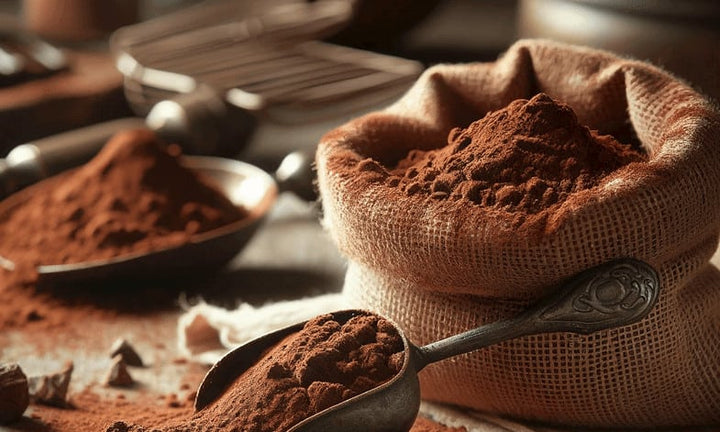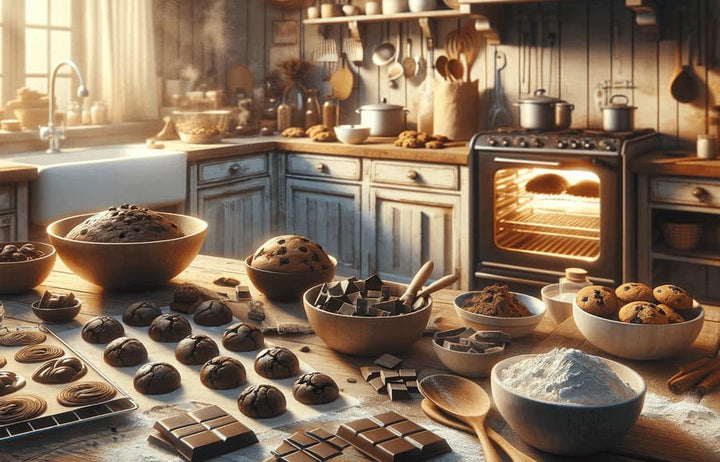Chocolate has always been a beloved ingredient in kitchens worldwide with its rich flavour and smooth texture.
Melting chocolate can be tricky, but the microwave offers a quick and convenient method.
This post will explore the art of melting chocolate in the microwave, transforming solid chocolate bars or chips into a luscious, creamy liquid.
How to Melt Chocolate in the Microwave
To melt chocolate in the microwave, break it into small, even pieces and place it in a microwave-safe bowl.
Microwave it on medium power for 30 seconds, then stir.
Continue microwaving in 20-second intervals, stirring after each, until the chocolate is fully melted and smooth.
Be careful to avoid overheating.
Here is a detailed step-by-step guide to help you melt chocolate smoothly in the microwave:
-
Choose the Right Chocolate: Opt for chocolate bars or high-quality chocolate chips. These melt more evenly compared to lower-quality chocolates.
-
Chop the Chocolate: If using a chocolate bar, chop it into small, even pieces. This ensures uniform melting.
-
Select a Microwave-Safe Bowl: Use a dry, microwave-safe bowl. Even a tiny amount of water can cause the chocolate to seize.
-
Microwave in Short Bursts: Place the chocolate in the bowl and microwave it on medium power (50%) for about 1 minute.
-
Stir Regularly: Remove the bowl from the microwave and stir the chocolate well. The chocolate may retain its shape at this stage, but stirring will help it melt evenly.
-
Continue Microwaving in Short Intervals: Return the bowl to the microwave and heat in 20 to 30-second bursts, stirring well after each interval. Avoid overheating, as chocolate can burn quickly.
-
Check Consistency: The chocolate should be smooth and glossy. If necessary, continue microwaving in shorter intervals (10-15 seconds), stirring each time, until thoroughly melted.
-
Use Immediately: Once melted, use the chocolate for your recipe immediately. If the chocolate begins to harden, gently reheat it for a few seconds in the microwave.
Remember, different types of chocolate (dark, milk, white) have different melting points and may require adjustments in heating time.
Always watch your chocolate closely to prevent overheating and ensure a smooth, delicious result.

How to Melt Dark Chocolate in the Microwave
To melt dark chocolate in the microwave, chop it into small, uniform pieces and place them in a microwave-safe bowl.
Heat on medium power for 30 seconds, then stir.
Continue heating in 15-20 second bursts, stirring after each, until the chocolate is completely melted and smooth.
Dark chocolate can burn easily, so it's important to heat it gently and stir frequently.
How to Melt White Chocolate in the Microwave
To melt white chocolate in the microwave, break it into small, even pieces and place them in a microwave-safe bowl.
Microwave on medium power for 20-30 seconds, then stir.
Continue heating in 15-second intervals, stirring each time, until the chocolate is fully melted and smooth.
White chocolate can burn quickly, so use lower power and shorter intervals than dark or milk chocolate.
How to Melt Milk Chocolate in the Microwave
To melt milk chocolate in the microwave, chop it into small pieces and place them in a microwave-safe bowl.
Heat on medium power for 30 seconds, stir, and then continue heating in 20-second intervals, stirring after each, until the chocolate is fully melted and smooth.
Be mindful to avoid overheating to prevent the chocolate from burning.

Can You Melt Chocolate in the Microwave Without Spoiling It?
Following the correct technique, you can melt chocolate in the microwave without spoiling it.
Microwave melting is convenient, but it requires careful attention to avoid overheating or burning the chocolate.
Here are some essential tips to ensure successful melting:
-
Use Low to Medium Power: Set your microwave to a low to medium power setting (around 50%). High power can cause the chocolate to burn.
-
Chop the Chocolate: If using a chocolate bar, chop it into small, even pieces. This promotes uniform melting.
-
Dry, Microwave-Safe Bowl: Ensure your bowl is completely dry and microwave-safe. Any moisture can cause the chocolate to seize.
-
Short Heating Intervals: Start by microwaving the chocolate for an initial short burst (about 30 seconds to 1 minute), then stirring between each burst in shorter intervals (15-30 seconds).
-
Stir Regularly: Stirring is crucial as it helps evenly distribute heat. Even if the chocolate retains its shape, it might have started melting and needs stirring.
-
Don’t Overheat: Be vigilant and stop heating as soon as the chocolate is mostly melted but still has a few small lumps. These will melt with the residual heat as you stir.
-
Immediate Use: Use the melted chocolate immediately in your recipe. If it starts to solidify, you can reheat it for a few seconds, but be careful not to overdo it.
Following these steps, you can successfully melt chocolate in the microwave without spoiling it, ensuring a smooth and evenly melted result.
What is the Best Type of Chocolate for Melting?
The best type of chocolate for melting is couverture chocolate.
This variety stands out due to its high proportion of cocoa butter, typically ranging from 32% to 39%, which gives it a superior taste and ensures a smoother and more fluid melt.
The increased content of cocoa butter in couverture chocolate allows it to melt evenly and smoothly, making it an ideal choice for confectionery and baking.
Can Adding Oil Help When Melting Chocolate?
Adding oil can indeed help when melting chocolate, particularly in certain situations.
Here’s why and how you should do it:
-
Improves Consistency: Adding a small amount of oil can make the melted chocolate smoother and more fluid. This is particularly useful when the chocolate seems too thick after melting, and you need a thinner consistency for coating or drizzling.
-
Type of Oil: Using neutral-flavoured oil like canola, vegetable, or coconut oil is essential. Strong-flavoured oils could alter the taste of the chocolate.
-
Quantity Matters: Use a small amount — typically a teaspoon of oil per cup of chocolate. Too much oil can make the chocolate greasy and affect how it tastes.
-
Method: Add the oil to the chocolate before you start melting it. Stir the mixture well to ensure the oil is evenly distributed.
-
Avoid Water-Based Liquids: Never use water, milk, or other water-based liquids to thin chocolate. Even a tiny amount of water can cause chocolate to seize and turn grainy.
-
Special Uses: Oil can be particularly useful when melting chocolate for a fountain or fondue, as it helps maintain a flowing, dippable consistency.
-
Caution with Tempering: If you're tempering chocolate for a glossy finish and a sharp snap (like for candy making), adding oil is not advisable, as it can interfere with the tempering process.
So, a bit of oil can be a helpful addition when melting chocolate, especially to improve the fluidity for specific applications.
However, using the right type and amount of oil is essential to avoid altering the chocolate’s taste and texture.
Where Can You Buy the Best Melting Chocolate?
You can find some of the best melting chocolate with Whitakers easymelt products, such as our Dark Chocolate 55% Couverture Chocolate Mini Shards.
These mini shards are designed for easy and efficient melting, making them ideal for various culinary applications where smooth, high-quality melted chocolate is desired.
Some Notes From an Expert Chocolatier
As an expert chocolatier, one crucial piece of advice I always share is the importance of precision and care when melting chocolate.
Chocolate is a delicate ingredient easily spoiled by overheating or sudden temperature changes.
The key is to melt it using low heat and stirring frequently and gradually.
This approach preserves the chocolate's rich flavour and smooth texture and prevents issues like seizing or graininess.
Remember, patience and attentiveness are your best tools in achieving that perfectly melted chocolate, which is crucial for exquisite chocolate creations.
Final Notes On Melting Chocolate in the Microwave
Melting chocolate in the microwave can be a simple and efficient process.
The key takeaways are to use low to medium power, heat in short intervals, and stir frequently.
This method minimises the risk of overheating and ensures a smooth, even melt.
Whether you're using dark, milk, or white chocolate, remember that each type responds differently to heat and requires slight adjustments in technique.
With some practice and attention to detail, you can master the art of melting chocolate in the microwave, opening the door to a world of delicious, chocolate-infused creations.
Patience and careful monitoring are the secrets to perfectly melted chocolate every time.
